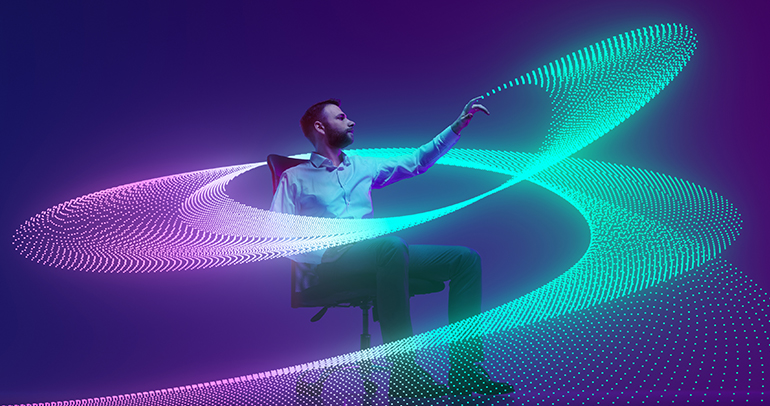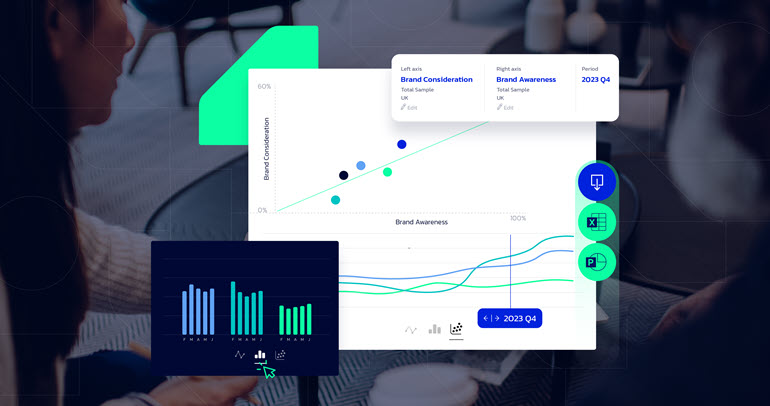
Bring clarity, speed and accuracy to emotional insights in market research—without relying on words.
Why Understanding Consumer Emotions Matters for Brands
We all like to think of ourselves as rational decision-makers. But when we buy a car, choose a cereal or react to a brand ad, our emotions quietly steer the wheel. And when a product or service makes us feel something, we are not only motivated to buy it, we are also often willing to pay a premium for it. That’s why marketers and brands have long tried to measure and understand consumer emotional responses—to better position brands, craft compelling messages and build loyalty.
But there’s a catch: accurately capturing emotion and intent through traditional surveys or words alone is tough. Consumers often struggle to describe exactly how they feel—and researchers must guard against misinterpreting or mischaracterizing their descriptions. This makes emotion measurement both critical and frustratingly complex.
Tap Into the Brain’s Native Language: Visuals That Reveal True Emotion
The good news? There’s a faster, clearer way to surface emotion—using images. Visuals help bypass the clunky filters of language and articulation. Here’s why images outperform words when it comes to understanding emotional reactions:
- Universally understood—No matter the language or communication skills
- Lightning fast—Processed up to 600x faster than written text
- Emotionally rich—Nuance, complexity and gut-level reactions, instantly
This kind of subconscious, instinctive reaction is known as System 1 emotional processing—a concept popularized by Nobel laureate Daniel Kahneman. When researchers harness this quick, emotional reaction to images, they unlock insights that are more genuine and less filtered.
Validated Visuals Lead to Smarter Brand Decisions and Competitive Advantage
With this understanding, market researchers and brand strategists began using images to better characterize emotional response and consumer sentiment when evaluating a variety of issues (e.g., brand, product, messaging). Typically, consumers would be directed to a preselected set of images and then asked to choose the image that best represented the emotion that the subject stirred in them.
While this technique is superior to earlier approaches, its implementation can be seriously flawed. Since the specific set of images is critical to the success of this technique, images must reflect an appropriate range of emotions, and they must be proven to have a strong association to the emotions they’re trying to convey. It’s common for researchers to put too little thought into the range of emotions they should try to represent with their images, and it’s dangerously easy for an untrained researcher to assemble their own collection of images based on their subjective perceptions.
How Evoke™ Revolutionized Emotion Measurement in Market Research
Back in 2020, Escalent addressed these deficiencies by introducing a new and better form of emotion measurement and image testing called Evoke™. Grounded in Robert Plutchik’s renowned Wheel of Emotions, Escalent’s Evoke is built on a foundation of 32 validated emotional categories. Using the wheel as its foundation, Escalent rigorously tested each image in the Evoke set to confirm its emotional association—removing guesswork and bias. Since its launch five years ago, Evoke has powered multitudes of qualitative and quantitative market research projects, helping marketers and brands pinpoint how customers feel about:
- Brand perception and loyalty
- Product concept and features (or their discontinuance)
- Ad messaging, creative and campaign testing
- Policy changes
- Customer experience and satisfaction
- And much more
What’s New in 2025: A Smarter, Expanded Evoke™ Image Set
Escalent has expanded and refreshed Evoke, keeping only the highest-performing images and growing the validated image set by 33%. In this refresh, we used artificial intelligence to support and enhance human judgment—leveraging two AI platforms to evaluate and classify emotional representations across both established and new images. These AI insights helped refine our image set before final testing with humans. The result is a broader, more precise selection of images that richly and effectively communicates consumer emotions, helping brands better understand customer feelings towards their products, services and marketing.
Go Beyond Words to Accurately Measure What Customers Feel
If you care how your customers really feel—about your brand, your product or your message—you need to go beyond words. Let’s talk about how Evoke™ helps you measure and understand emotional response with speed, accuracy and depth—and helps your brand make smarter, more emotionally informed decisions.
Want to better understand customer emotions? Complete the form below, and we’ll be in touch soon.
Want to learn more? Let’s connect.








